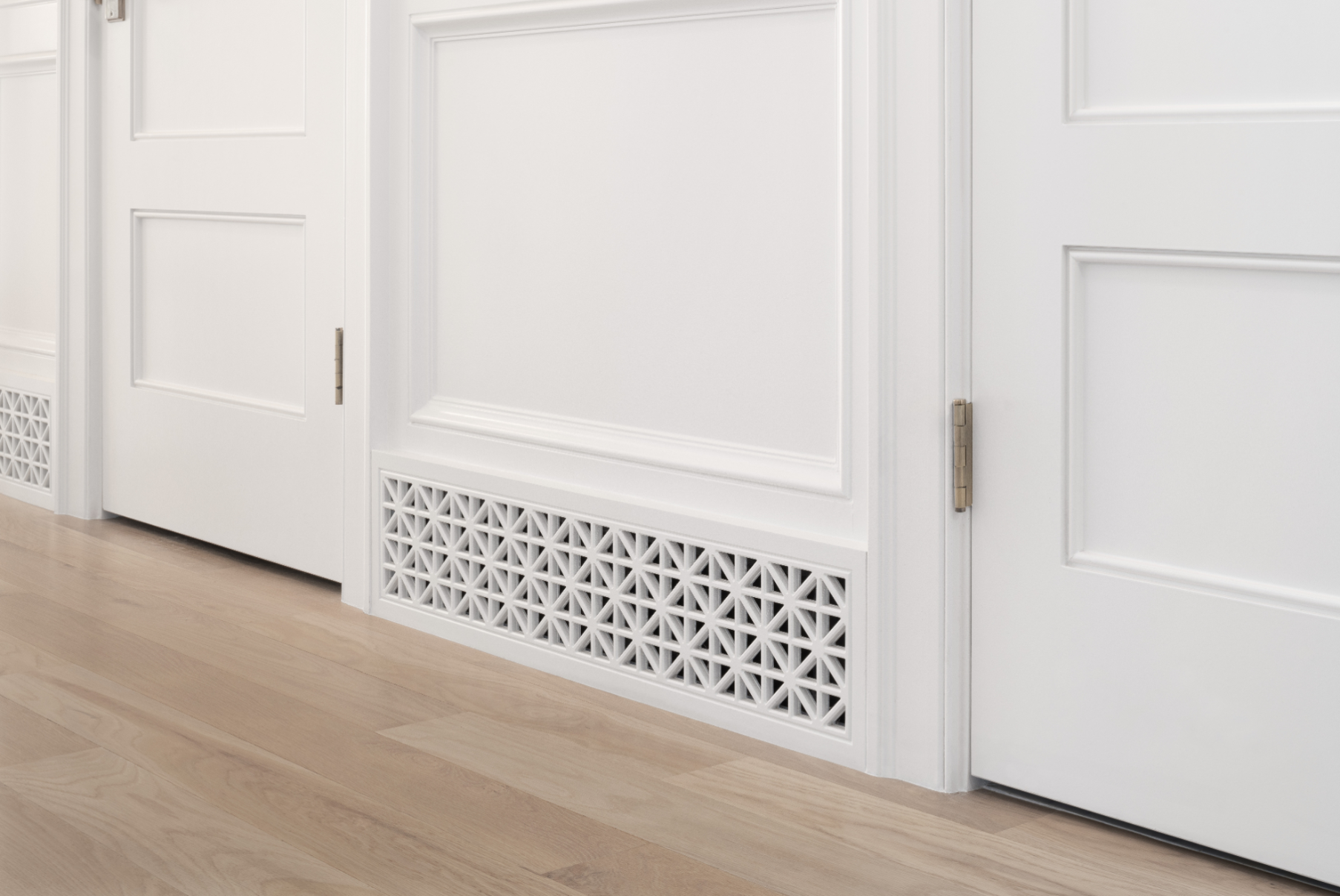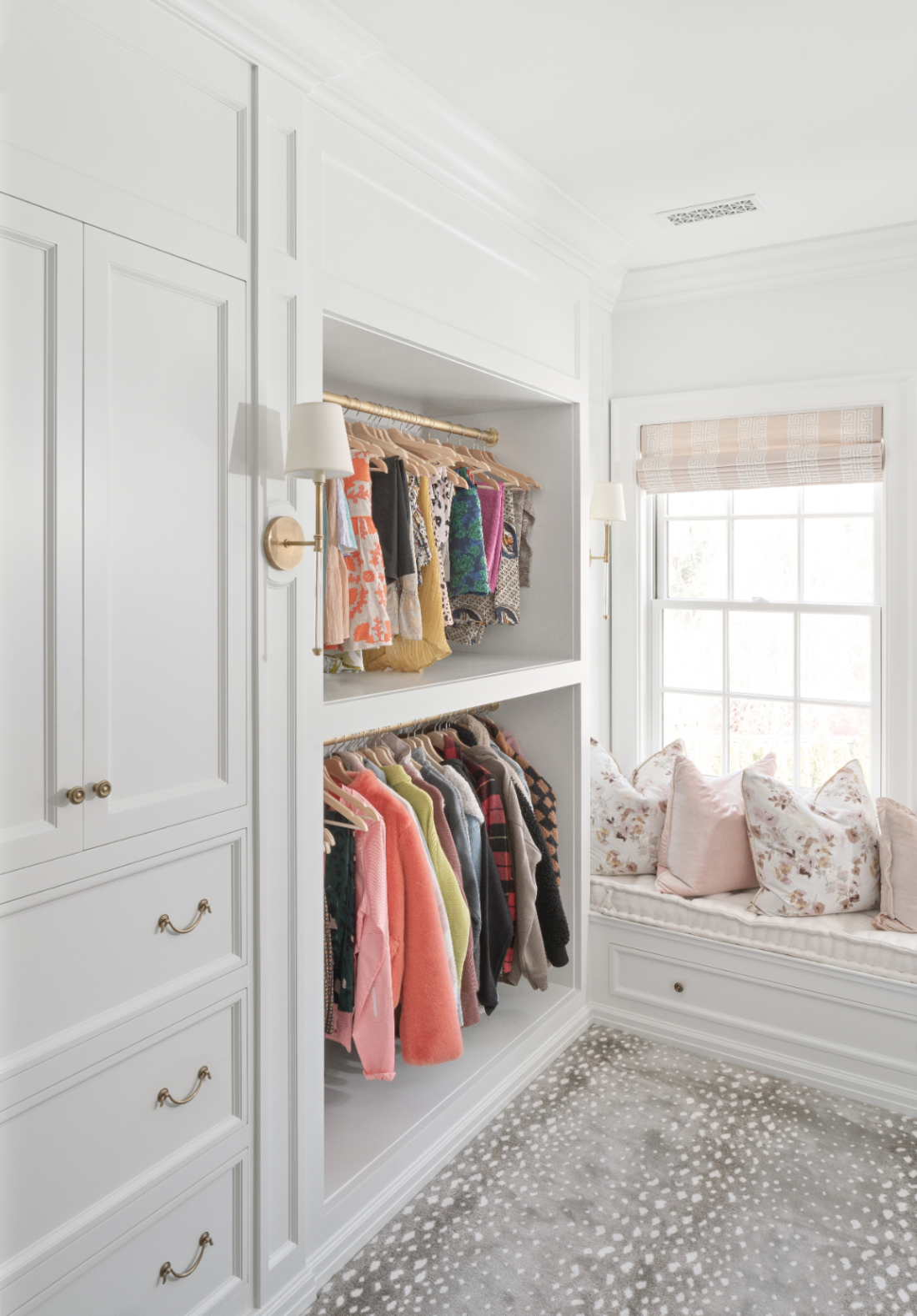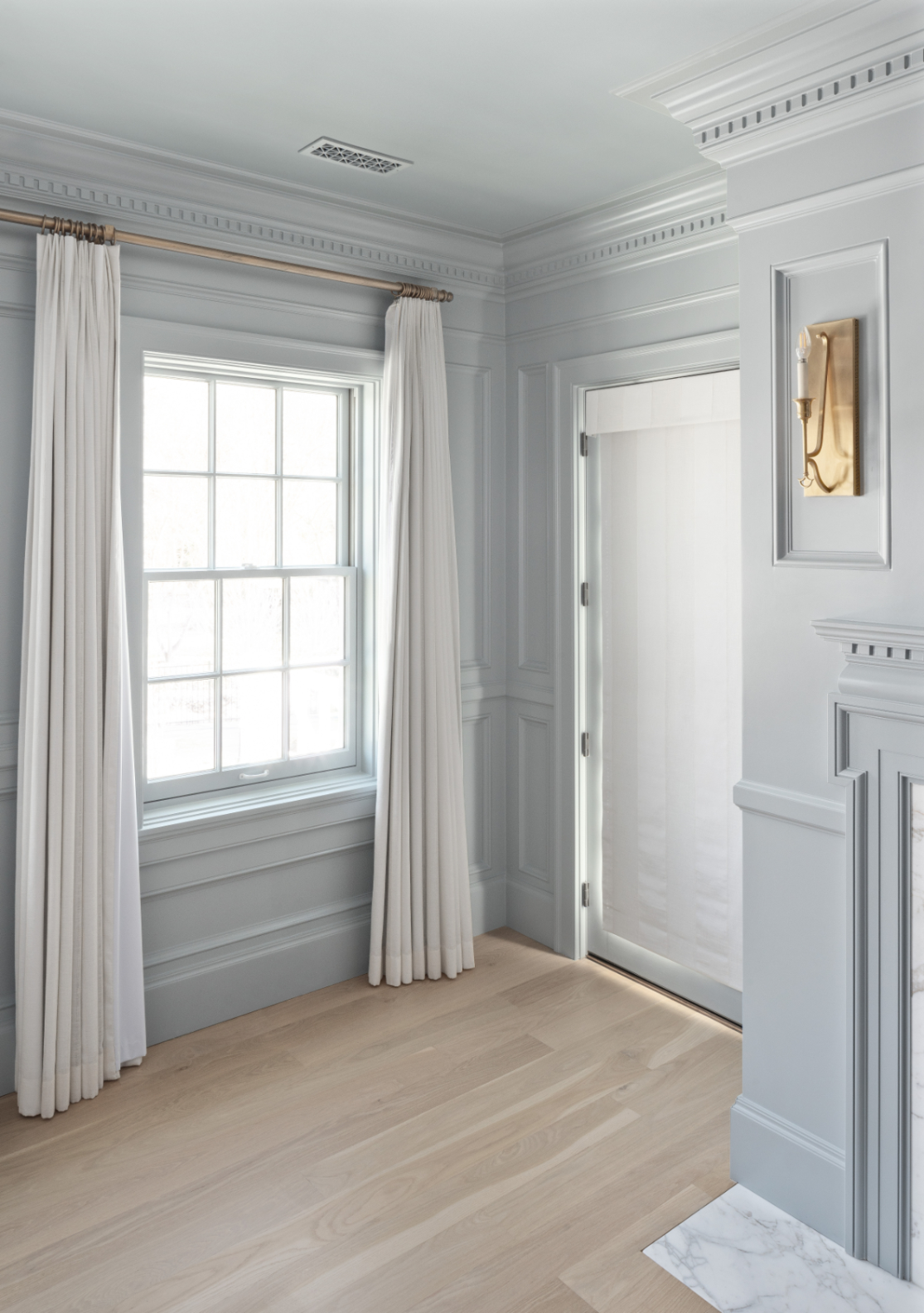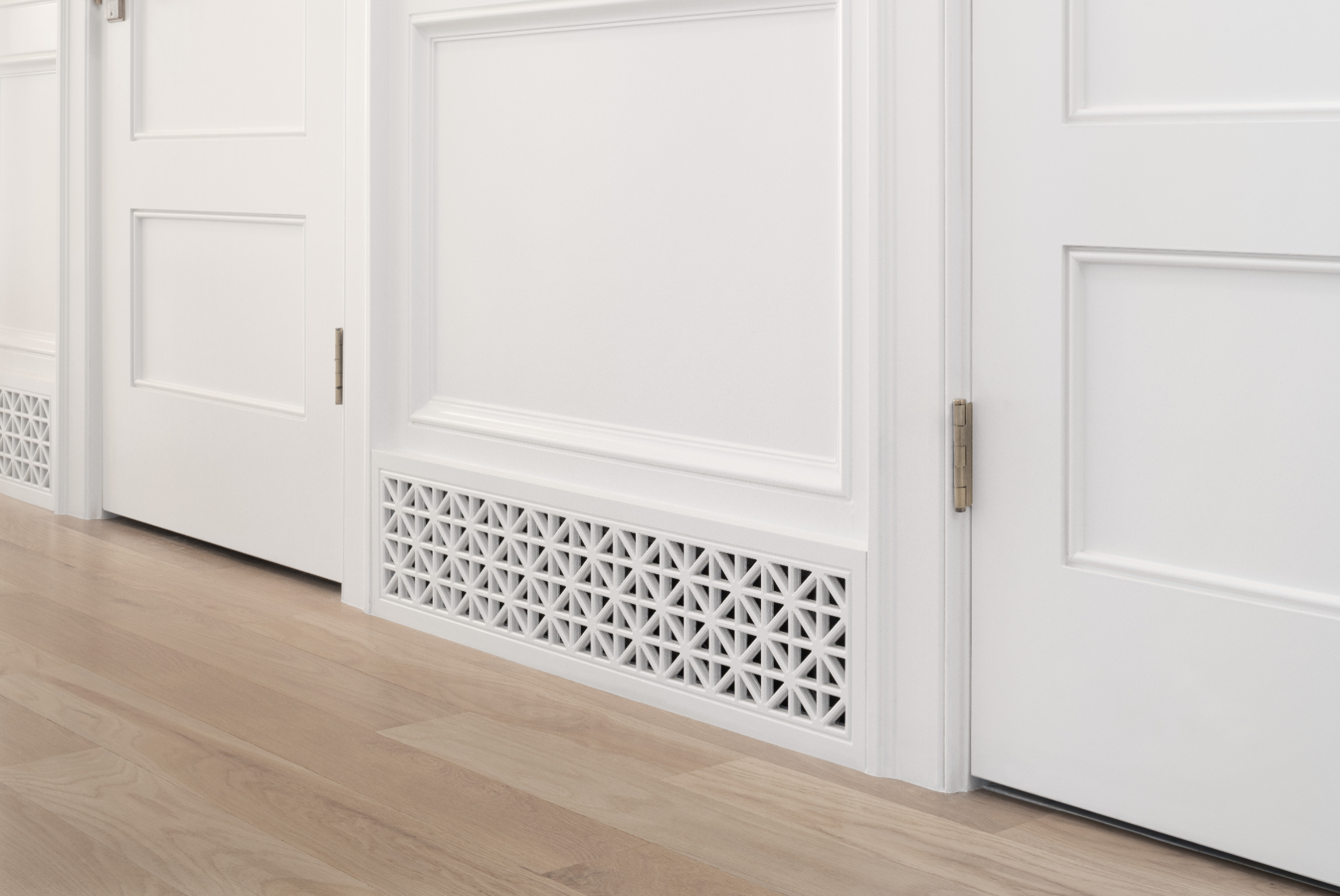Air Return Vent Questions
Not everyone’s calling in life is to be an HVAC expert, and there is no shame in that. But if you’re a homeowner, or even renter, it’s important to have a basic understanding of what’s going on in your heating and cooling system so you can care for it properly, and even diagnose minor issues before having to call in a pro.
So buckle up as we answer the most frequently asked questions regarding air return vents!

What Is An Air Return Vent?
An air return vent is the hole through which the air in your home is sucked and sent back, or returned, to the HVAC system.
This is why you won’t feel air coming into a room through an air return vent—that is the job of another type of vent entirely (air supply vent). Cold air return air vents are generally larger than other vents, and there are fewer of them in the home. They are usually located in central, larger rooms to more efficiently pull air from the home and into the system. Return air vents are often located on a wall, rather than the floor or ceiling.
Air return vents play a critical role in balancing the air in your home. When air supply vents deliver heated or cooled air to a room, the air pressure of that room changes. Return vents help equalize that pressure as they remove the extra air. This helps keep your home comfortable and your heating and cooling systems running efficiently.

Designer: Christopher Scott Cabinetry & Design
What Is An Air Supply Vent?
An air supply vent is the opposite of an air return vent—its job is to supply your home with air, either or heated or cooled, from the HVAC system or furnace and through the ducts to the vents. These types of vents can be found on the floor, ceiling, or wall of almost every room in a home to provide consistent airflow throughout.
Your air supply vents help your heating and cooling systems work more efficiently. Check all your vents regularly to make sure they are clean, unobstructed, and open. Closing supply vents throws your heating and cooling system off balance, creates airflow problems, and makes the system work harder. That’s why it’s better to keep all the vents open for optimized airflow and energy efficiency. If you find there are rooms you don’t need heated or cooled as much, talk to your HVAC specialist about zoning your system to save energy.
Speaking of efficiency, you should clean your air ducts regularly to help keep your system running at its peak. Not only do dirty air ducts contribute to asthma and other illnesses, but they can also increase energy costs by up to 30%. Home air ducts should be cleaned every three to five years for best results.
What’s The Difference Between A Vent Cover And Vent Register?
The difference between a vent cover and vent register is functionality. While both work to prevent larger bits of debris from entering your air ducts while still allowing for proper airflow, only a vent register has the ability to change airflow direction or close the vent partly or completely with the use of a damper—a small lever that can move back and forth.
Whether you choose a vent cover or a vent register is entirely up to you. There are advantages to vent covers for interior design, as they offer a simpler, clean look. However, vent covers don’t allow you to stop, limit, or redirect airflow. This may not be a deal breaker though, since as we mentioned earlier, it’s more efficient to keep all vents open.
Why Are Air Return Vents Important?
Air return vents are essential to your HVAC system. They are what pull air from the home, return it to the system, filter it, and help maintain comfortable temperatures throughout your house. They also help remove excess moisture from the air, thus preventing your home from feeling muggy or dank.
Unlike most vents and ducts, you can clean your HVAC air return vents yourself. All you have to do is remove your vent cover and either vacuum or wipe it clean. Then, vacuum out any accessible debris inside the vent. This will help your air return vent maintain optimal function.
Where Should Return Air Vents Be?
Air return vents are often located near the center of a home, generally with one return air vent per floor. This allows the air to circulate efficiently throughout the home and back to the HVAC system. Return air vents are usually found in the lower wall of a room or hallway. Ideally, your return air vents and supply vents should be on opposite sides of the space. Otherwise, you may be pulling some of the heated or cooled air back into the system before it has a chance to circulate.

Designer: Christopher Scott Cabinetry & Design
Do You Need A Return Vent In Every Room?
An air return vent in every room of the home is becoming more common in modern building codes. In homes older than 10 years, there is usually just one return air vent per floor or large section of a home, located centrally so that the suction can pull air efficiently from every corner of the level.
Having an air return vent in every room can increase the energy efficiency of a home by recirculating the air internally rather than drawing hot or cold air from outside. However, this can pose a slight staging problem since furniture and draperies should be kept clear of cold air return vents. This puts limitations on the design elements of the room if the vents are not placed strategically.
How Do I Know If My Return Air Vent Is Working?
Because the return air vent works to suck air from a room and back into the ducts, you can try this simple test to see if it is working: take a tissue or thin paper and hold it in front of the return air vent, about 6” away. If the paper is being pulled toward the vent, you know it is doing its main duty.
Is It Okay To Cover A Return Air Vent?
While you should have a filter on your air return vent to prevent too much dust or moisture from entering your air system and recirculating back to you, you should never actually cover a return air vent. Keep furniture and even curtains at least 10” away from the vent opening in order to allow for proper air flow. It’s important to keep the area in front of your return air vents clear for a few reasons. If you don’t, it reduces the efficiency of your air system and causes it to use more energy. This can not only increase your bill but can even wear out your system faster than necessary causing the need for repairs or even replacement.
BUY: Get Your Custom Decorative Vent Covers Now!
Can You Put A Couch Over A Floor Vent?
It’s not a great idea to cover a floor vent, even with a couch that has legs lifting it up off the floor. You want a good 10” between large, dense furniture for optimal airflow from a floor vent or any other vent. Covering a floor vent with furniture will simply diminish the efficiency of air flow and temperature control in the space.
Should I Block Cold Air Return Vents In The Summer?
You should never block your air return vents. Period. However, if you’re looking to keep your home cooler in the summer, you can try closing lower supply vents and keeping upper ones open, allowing cooler air temperatures to come in from above and sink throughout your house.
Should Return Air Vents Be Open Or Closed In Winter?
Once again, NEVER close a return air vent. If you have operable cold air SUPPLY vents in your home, you can close upper supply air vents and keep lower return air vents open in the winter to keep your home cozy while allowing your heating system to work efficiently.
What Happens If There Is Not Enough Return Air?
As mentioned earlier, getting enough return air to your HVAC system is crucial for its proper functioning. When there isn’t enough air, it strains the system but can also prevent latent heat from getting to the evaporator coil causing it to freeze, which can cause even further damage.
Can You Have Too Much Return Air?
Too much return air coming through your system isn’t much of an issue because the fans and ductwork working to get that air back into the system only pull with so much force to make the HVAC system work correctly. The issue comes when the air returns are unfiltered, allowing dust and gunk to get into the heating and cooling system coils, reducing their efficiency and overworking your system while recirculating less than clean air to your home.
Does My Air Return Vent Need A Filter?
YES. As just indicated, having a clean filter on your return air vents at all times is key to an efficient system that will circulate nice clean air into your home. Make sure you’re following recommended procedures for switching out filters at regular intervals (usually every few months, depending on the type and manufacturer).
What Kind Of Material Should I Use For A Return Air Vent Cover?
The best vent covers for your return air vent openings are high-density machine board custom vent covers. The custom vent covers designed and created by Christopher Scott Cabinetry are made of high quality HDM (high density machine board) with intricately cut modern designs to upgrade any home’s interior. There are several reasons to choose custom wood vent covers for your home:
- They’re an inexpensive way to personalize your home from top to bottom.
- They’re completely customizable, ready to prime and paint to match your interiors perfectly.
- They add texture and dimension to your home that feels the way high-end custom cabinetry does.
- They’re a durable, efficient, and beautiful way to put the finishing touches on a necessary system in your home.
Why Does A Custom Air Return Vent Matter?
For so long, homeowners were forced into a compromise of design and style when it came to vent covers. But today there are numerous beautiful and custom vent cover options that not only enhance your decor but increase your home’s value and comfort with eye-catching, dimensional designs for everyone.
Optimizing Cold Air Return Vents For Efficiency
To keep your cold air return vents in tip-top condition, inspect them regularly. Check to ensure the vent screws are tightened properly. Clear the area in front of the vent to ensure it has proper airflow. You should also remove the vent cover and vacuum or wash it inside and out. If there is any debris inside the vent, you can vacuum that up as well. Any maintenance beyond this should be left to a professional, but taking these few simple steps once or twice a year will go a long way to keeping your system running smoothly.
Understanding The Role Of Return Air Vents In Air Quality
The air supply vent and cold air return vent can have an impact on the air quality in your home. First, if the supply vents or ducts are dirty, they can pump dusty, dirty air into your home. If the return vents are dirty, they can suck dust and dirt into the HVAC system, which can cause maintenance problems and shorten the life of your system. However, when your vents and ducts are properly maintained and positioned (not right next to each other), they can help efficiently circulate healthy, temperature-controlled air throughout your home.
Integrating Vent Covers With Interior Design
No rule says your vent covers have to be builder basic. Instead of using the standard grill covers, consider integrating custom vent covers for interior design flair throughout your home. These beautiful air supply vent covers can be used on air ducts in the wall or ceiling. They come in a white painted option, or in an unfinished version that can be customized to match your home.
Custom Decorative Air Vent Covers For An Instant Luxury Upgrade To Your Home
Christopher Scott Design has created the most beautiful and functional solution to run-of-the-mill vent grates so you aren’t forced to sacrifice your home’s unique style. Our decorative air vent covers add perfect dimensional detail to anywhere from a kitchen cabinet toe kick to a bedroom wall, from a central return vent to a bathroom ceiling vent. Wherever they are, they’re guaranteed to add valuable form and function to your home. Installed with other modern air vent covers from us, a cohesive and high-end built-in look can be achieved throughout your home for ultimate architectural and design harmony.
Some of the benefits of our decorative vent covers include:
- Premium Home Upgrade: Christopher Scott Cabinetry’s Custom Decorative Air Vent Covers are designed to help you bring your distinctive sense of style into every room in the house. Our beautiful and functional designs will magnify what is already unique about yourself or remind everyone else just how stylish they really want their home living environment to be!
- Meticulous Design: Vent covers are a great way to add design impact and improve the look of your home. With our custom vent cover designs, you can choose from different shapes for each room in order to get that perfect personalized feel!
- High-Quality Fabrication: The best way to ensure that your vent cover looks like it was always meant for the home is by using high-quality materials. We use premium machine board. Our vents are made from high-density machine board (HDM) which can be primed or painted any color of choice! All elements created through Christopher Scott Design will have intricate details and beauty without breaking budget constraints.
- Versatile Performance: With its sleek design, our decorative vent covers offer a high-quality, primer-and-paint-ready product. Easy installation. Functional and aesthetic. These can be used as decorative ceiling vent covers, wall vent covers, toe kick air duct vent covers, return air vent covers, air supply vent covers, bathroom air vent covers, and more.
>> Get Your Custom Decorative Vent Covers Here <<
At Christopher Scott Design, we only use high-quality materials we trust. That’s why our vent covers are made of premium, high-density machine board (HDM), ready to prime and paint to your exact specifications, and made to withstand temperature changes common to any HVAC system. Working with HDM also makes it possible to create the intricate and flawless decor grates you should expect from Christopher Scott Design, at a fraction of the cost of cast metal.
Contact us to find out more about how we can help with your latest project, or visit our Amazon store to upgrade your air vents with our decorative unpainted or white painted vent covers today.



